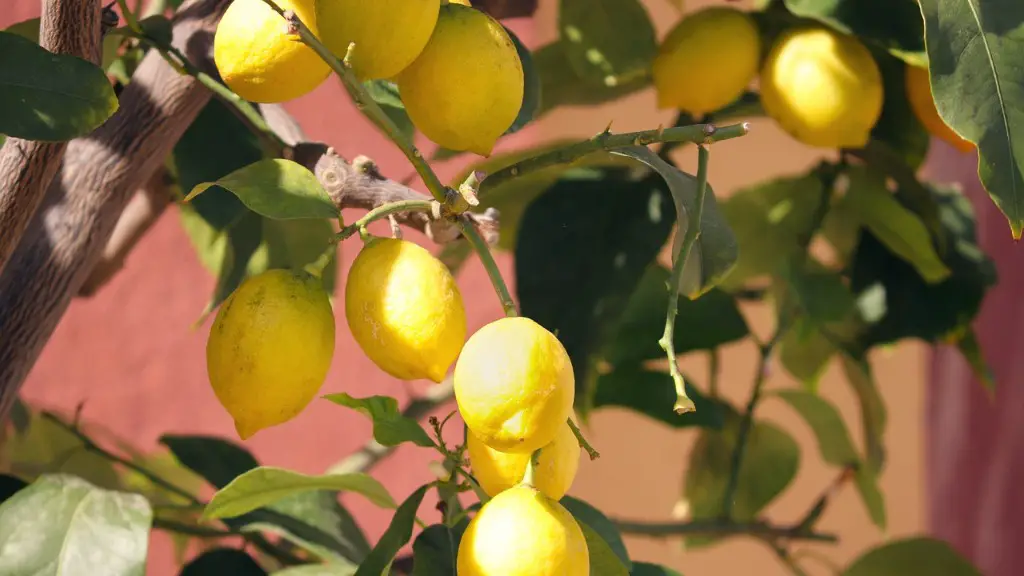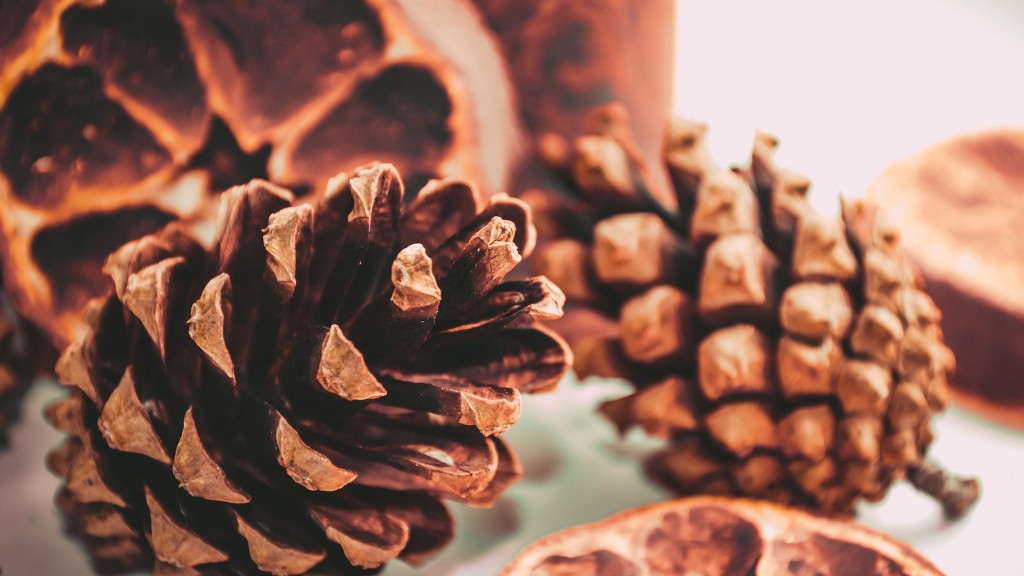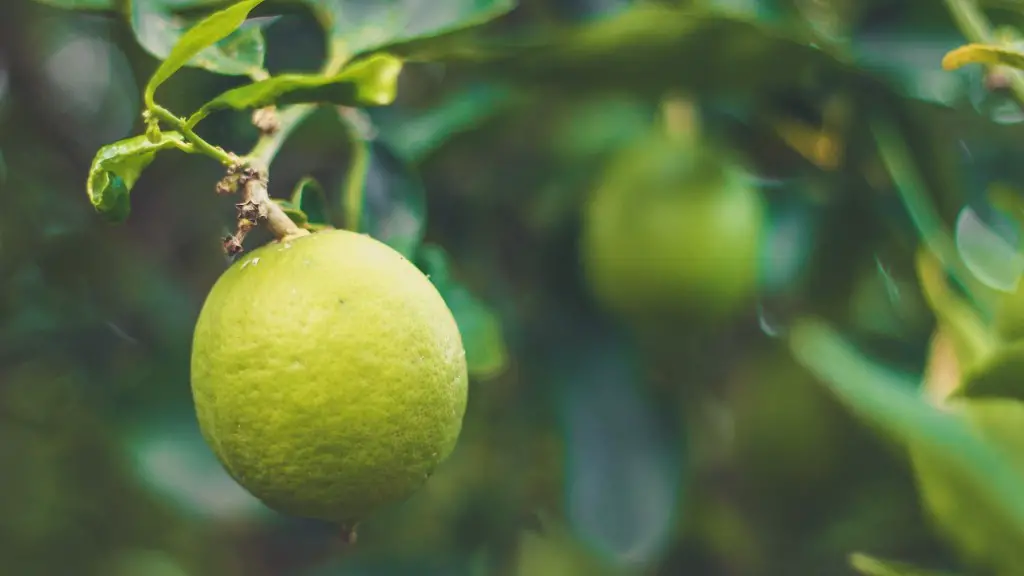It is normal for trees, including apple trees, to drop leaves throughout the year due to natural processes such as shedding, seasonal leaf replacement, or disease. One of the most common reasons why apple trees drop yellow leaves is due to inadequate nutrients or an imbalance of nutrients. If the apple tree is experiencing any type of nutrient deficiency, it will shed its yellow leaves to conserve its energy. Deficiencies in some of the essential macro- and micronutrients can lead to the yellowing and dropping of leaves.
Nutrient imbalance is also a common cause of yellowing leaves on apple trees. Apple trees can become unbalanced in nutrients due to excessive applications of certain nutrients or inadequate amounts of certain others. This can cause an imbalance in the tree’s nutrient ratios and can result in the yellowing and dropping of its leaves.
Another possible cause of yellow leaves on an apple tree is inadequate irrigation. Apple trees need regular irrigation to ensure the absorption of nutrients from the soil. If the apple tree’s soil is too dry or waterlogged, it can cause the accumulation of salts in the soil which will lead to the yellowing and dropping of leaves.
In addition, apple trees can develop a variety of fungal problems which can cause their leaves to become yellow and drop. Common fungal diseases such as apple scab, powdery mildew, and fire blight can all lead to yellowing and dropping of leaves. These fungal diseases are typically caused by too much moisture in the area, which can also result in a nutrient imbalance and leaf drop.
Finally, environmental stressors can also be a major contributor to the yellowing and dropping of leaves on apple trees. Hot and drywinds, severe cold temperatures, and drought conditions can all cause the leaves of an apple tree to become yellow and eventually drop. Trees in areas with poor sunlight exposure or poor soil drainage can also become stressed and experience significant leaf drop.
Nutrient Deficiencies
Nutrient deficiencies can occur due to a variety of reasons including poor soil quality or a nutrient imbalance in the soil. Common nutrient deficiencies that can cause yellowing and dropping of leaves on an apple tree include nitrogen, phosphorous, potassium, and micronutrients such as iron, manganese, and zinc. If a deficiency in any of these nutrients is detected, it should be rectified by adding additional nutrient sources or fertilizers to the soil.
Nitrogen is an essential plant nutrient and is required in large amounts for the growth and production of fruit. If a tree is not receiving the proper amount of nitrogen, it can become nitrogen deficient and will start to drop its leaves. Signs of nitrogen deficiency include yellowish-green leaves, pale or yellowish fruits, and a stunting of the tree’s growth.
Phosphorous is also an essential plant nutrient and is required for proper root growth and fruit production. Phosphorus deficiencies can cause stunted growth as well as yellowing and dropping of leaves. Signs of phosphorus deficiency include yellow leaves and stunting of the tree’s growth.
Potassium is a third essential plant nutrient and is required for efficient water usage, photosynthesis, and chlorophyll formation. Potassium deficiencies can cause yellowing of leaves as well as flowering and fruiting problems. Signs of potassium deficiency include yellowing of leaves, leaf margins, and tips.
Finally, micronutrient deficiencies can also cause yellowing and dropping of leaves on an apple tree. Iron, manganese, and zinc are the three most common micronutrient deficiencies and can cause yellowing of leaves and stunted growth. Signs of iron and manganese deficiency include yellowing of the leaves with interveinal chlorosis, while zinc deficiency causes yellow leaves and stunted growth.
Pest Management
Pests, such as mites and aphids, can also lead to the yellowing and dropping of leaves on an apple tree. These pests consume the sap from the leaves and suck out the nutrients from the foliage, resulting in the yellowing and dropping of leaves. Mites are small arachnids that feed on the underside of leaves, while aphids feed on the sap from the leaves.
In order to prevent or manage pests, a preventative spraying regime should be applied to the tree. Foliar applications of horticultural oils, insecticidal soaps, and neem oil can all be effective in controlling pests on apple trees. These sprays should be applied to the tree as soon as pests are detected in order to prevent further damage and yellowing and dropping of leaves.
In addition, physical removal of pests, such as mites and aphids, can help reduce their population. This can be done by using a pressurized water sprayer to remove the pests from the foliage of the tree. This method should be repeated every two to three weeks in order to ensure that the pest population is adequately reduced.
Finally, biological control methods such as releasing beneficial predators, such as ladybugs and predatory mites, can also be used to reduce the population of pests on the tree. These beneficial predators will feed on the pests, removing them from the foliage of the tree and reducing the occurrence of yellowing and dropping of leaves.
Insecticides
If all of the other methods are ineffective, insecticide sprays can be used to kill the pests on the apple tree. These sprays can be in the form of chemical or organic products, such as pyrethin or neem oil, and should be applied as soon as pests are detected. These sprays should be applied every two to three weeks in order to ensure that the pest population is adequately reduced and the leaves are not continuing to yellow and drop.
In addition to applying insecticides, cultural methods, such as pruning and mulching, can also be employed to reduce pest populations. Pruning is important in order to remove any dead or dying branches which can attract pests. In addition, mulching the soil around the tree can help with pest control by keeping the soil moist and reducing the growth of weeds which can provide habitats for pests.
Finally, to reduce the occurrence of yellowing and dropping leaves, tree vigor should be maintained by proper fertilization and irrigation. Regular fertilization can help to ensure that the tree is receiving essential nitrogen, phosphorous, and potassium. In addition, appropriate irrigation can help to reduce the occurrence of leaf drop due to water stress.
Disease Management
Apple trees can also experience problems with a variety of fungal diseases, such as apple scab, powdery mildew, and fire blight, that can cause yellowing and dropping of leaves. In order to manage these diseases, a preventative spraying regime should be employed. This spraying regime should include applications of the correct fungicides at the correct times in order to interrupt the lifecycle of the fungal pathogen.
In addition, proper sanitation of tools and tree pruning can help to reduce the spread of fungal diseases. Pruning tools should be disinfected between each pruning session in order to prevent the spread of fungal spores from one tree to another. In addition, deadwood should be removed from the tree to reduce the chances of the disease spreading.
Finally, proper fertilization and irrigation are important in maintaining the health of an apple tree. Regular fertilization can help to stimulate the growth of the tree and promote the formation of healthy foliage which is more resistant to fungal diseases. In addition, appropriate irrigation can help to reduce the occurrence of disease as overly wet or dry soils can promote fungal growth.
Environmental Stressors
Environmental factors such as hot and dry winds, severe cold temperatures, and drought can all lead to stress on an apple tree and cause it to drop its leaves prematurely. To reduce the occurrence of leaf drop due to environmental stressors, shade and windbreaks can be employed. Shade cloth or deciduous trees can be planted near the apple tree to reduce the impacts of hot and dry winds. In addition, planting in a sheltered area can help to reduce the effects of windy conditions.
In addition, watering the tree on a regular basis can help to reduce the effects of drought. Mulching the soil can also help to conserve moisture and reduce the occurrence of water stress. Finally, selecting a variety of apple tree that is more tolerant to low temperatures can help to reduce the impacts of cold weather and the associated loss of leaves.
Proper plant nutrition and care can also help to reduce the effects of environmental stressors and leaf drop. Regular fertilization can help to ensure that the tree is receiving adequate amounts of nitrogen, phosphorous, potassium, and other essential nutrients. In addition, appropriate irrigation can help to reduce the occurrence of water stress and ensure that the tree has sufficient access to water during periods of drought.
Finally, pruning can also help to reduce the impact of environmental stressors on an apple tree. Pruning can help increase air flow around the tree and reduce the impacts of hot and dry winds which can cause leaf drop. In addition, pruning can help reduce the effects of cold temperatures by removing dead and damaged wood which can be a source of infection for fungal diseases.




